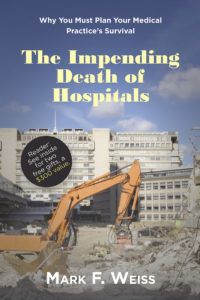With the tip of the hat to T.S. Eliot, the world for Community Regional Anesthesia Medical Group (CRAMG) ended on June 16, 2021, not with a bang but a whimper.
That’s when the Fresno, California group of approximately 40 physicians and close to 40 CRNAs, filed Chapter 11 bankruptcy after more than 20 years of providing services to Community Medical Centers’ three hospital campuses.
The bankruptcy filing followed the loss of the group’s exclusive contract. Additionally, according to CRAMG, large legal expenses defending a wage and hour suit brought by CRNAs also contributed to the decision to file bankruptcy.
Among other debts, CRAMG’s bankruptcy Petition indicates that $5.1 million is owed by it to Community Medical Centers.
The Business Journal reports that CRAMG “anticipated that it would renew a contract with Community Medical Centers before [Community Medical Centers] allowed the agreement to lapse.”
Anticipated?
But oddly, the same newspaper also reports that Community Medical Centers issued a request for proposal in advance of the expiration of CRAMG’s exclusive contract and that CRAMG did not provide a response.
Whatever the actual facts, the sad story provides some valuable takeaways for every physician, especially those who’re medical group leaders:
1. Contractual relationships such as exclusive contracts come to an end, even those that have been renewed time and again over the course of many decades.
2. If that’s the only relationship you or your group has, then the reason for your business’s existence will be mooted.
3. A contract with a single system to provide services at multiple facilities does not spread your risk. In fact, it might increase your fragility.
4. Don’t believe that relationships between medical groups and hospitals are based on love. “What have you done for me lately?” is the pertinent question. Demonstrate that.
5. Although the basis of CRAMG’s $5.1 million debt to the hospital system is unclear, other groups have self-inflicted similar wounds, sometimes fatal, by making an error in structuring their hospital contracts: agreeing to a deal in which the hospital loans funds to the group as opposed to paying a coverage stipend or guarantying a unit value. Loans are not stipends. Surprise, they have to be paid back! (Or, you have to declare bankruptcy.)





